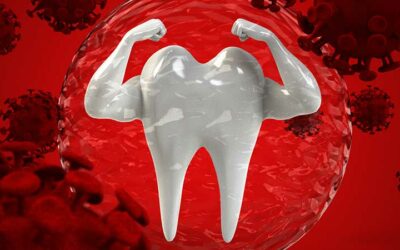5 Simple Steps to Healthy Gums
All of us try to take care of the health of our teeth and to treat dental diseases before it’s too late and the condition worsens. But for some reason, not everyone thinks about their gums. Gum health is just as important as the health and appearance of your teeth, as it affects your overall smile. Let’s take a closer look at what healthy gums should look like and the best ways to support them.
What do healthy gums look like?
Healthy gums are firm, without any signs of swelling and inflammation. They should be pale pink in color, with an even gum line. If you take care of our oral health, then it’s easier to notice the changes in your gums and turn to a periodontist in time.
There are signs and unpleasant sensations you may face when experiencing gum disease:
- Bleeding gums when brushing your teeth
- Very sensitive gums that feel and appear swollen
- There is a constant unpleasant smell coming from the mouth
- Suppuration between the gums and teeth
- Teeth become loose
- Bite changes
It is crucial to schedule a consultation with your periodontists as soon as you notice any of these changes. Once you meet with a periodontist and determine the severity and treatment plan, it is important to continue scheduling regular check-ups to monitor your oral health, and prevent future conditions from arising. Seeing a dentist regularly can aid in the prevention of various diseases, and provide guidance for sustaining an at home care routine for maintaining strong teeth and healthy gums.
Another thing that people often are worried about is a gummy smile. However, it’s an aesthetic problem that does not affect the health of gums if you’d like to have a naturally beautiful, broad smile, a periodontist can choose the right treatment plan for you. It’s now easier than ever.
How to get healthy gums
Gum health is all about keeping a healthy diet and taking care of daily hygiene.
Include in your diet some foods rich in proteins. Eating fish can help you keep an excellent balance of phosphorus, and vitamin D. Also do not forget about foods rich in calcium, iron, zinc, folates, and antioxidants. Nuts, cereals, cheese, and sour-milk products are great examples. You can try taking vitamin complexes on prescription as well.
As for a hygiene part, it is important to choose the right toothbrush, paste, and rinse. If you want to pick up your set, taking into consideration individual features, first see your primary dentist and decide how and when to see a periodontist if there is a need for more detailed examination.
Tips for healthy gums
Eat vegetables and fruits which require intense chewing
The right diet is one of the most important home remedies for strong gums. For example, pineapple. It stimulates saliva production, which, has a bactericidal effect and naturally washes the gum and teeth. This is also an effective natural antiseptic. Besides, pineapple contains bromelain, a very valuable enzyme. It neutralizes the effect of aggressive acids and normalizes the pH of the oral cavity.
Drink more fluids
Liquids are as important as food for strong teeth and gums. Try drinking green tea. It is rich in catechin, a natural antioxidant that does not allow bacterias to multiply. A glass of water after each meal will enable you to wash away the gums. Also, try to avoid carbonated drinks with lots of carbohydrates.
Oral hygiene
We all know that the teeth need to be cleaned at least twice a day, but few people remember that it should be done on average for 5 minutes. Right timing and movements can also improve gum health, so try to track it next time. To remove food from the interdental spaces, you can use dental floss. If you have removable dentures, keep in mind they also need proper care. Clean them daily in the morning and in the evening, plus, ideally each time after eating.
Use a right toothpaste
There are 2 groups of toothpaste that help strengthen gums. The first group includes pastes with an antiseptic. You can usually apply it for no longer than 2-4 weeks. Such an oral hygiene product is used during the period of exacerbation of gum disease, in conjunction with other methods of treatment. The second group includes those kinds of toothpaste, which contain anti-inflammatory components of plant origin and fluoride. You can use them on a regular basis.
Use a mouth rinse
Like toothpaste, rinsers are divided into two groups: for short courses of therapy and regular usage. Let your doctor pick up mouthwash for your gum care. If you apply the correct rinse twice a day, regularly after brushing your teeth, this will help to protect you from gum disease by minimizing all risks.
This is a brief overview of steps you can make to healthier gum and smile. Keep in mind that the best way to strengthen gums is your desire to provide them with good regular care.
You May Also Like...
Improve Your Smile, Improve Your Oral Health: Why You Should Consider Seeing a Periodontist for Cosmetic Procedures
When it comes to enhancing your smile, today's dental patients have a wealth of options. Choices, like in-office tooth...
When Should You See a Periodontist?
Often, people confuse the work of a dentist with that of a periodontist. If you’ve had the occasion to visit both,...
Oral Health and Periodontitis Associated with the Severity of COVID-19
Over the past year, there has been significant research showing a link between severe periodontal disease and...



